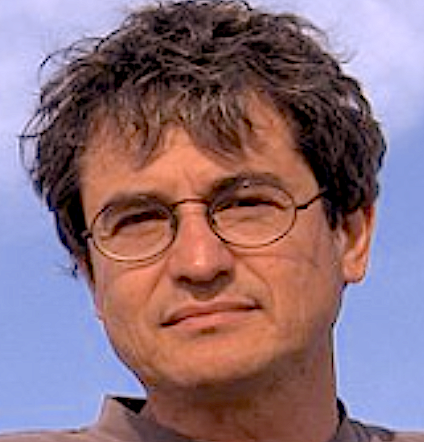
 CENTER FOR PERFECTION STUDIES: CONTINUITY•SYMMETRY•HARMONY GOALS.July 2017
CENTER FOR PERFECTION STUDIES: CONTINUITY•SYMMETRY•HARMONY GOALS.July 2017
HOMEPAGES: ASSUMPTIONS |DARK|FORMULAS|INFINITY|KEYS|Map|REVIEW|Transformation|UP
Dystopia is a sickness and a philosophy.
It is also part of “The Big Bang Fallout.”
By Bruce Camber
Too much of the USA and the world are encouraging dystopian attitudes. We must challenge them at every turn. Here are the faces of narcissism, nihilists with their nihilism and solipsism acting out in our world and in our neighborhoods and homes.
Big Bang: Sheldon (Jim Parsons) of the Big Bang Theory television show loves Stephen Hawking and “The Theory.” That’s television. Notwithstanding, Hawking was so successful selling his concepts (and the global scientific community was so mesmerized for well over 30 years), it has opened a major path to unfortunate attitudes, behaviors, and beliefs. Scholars and scientists who questioned “The Theory” were often laughed out of the room. In June 2017 that all changed when Neil Turok announced to the world, “The big bang theory is wrong.”
Not many scholars have had the courage to protest, and fewer still offer alternatives. The chortling of the big bang crowd has begun to quiet down.
Turok and Hawking were co-authors[1], [2], [3], [4], colleagues and friends. It takes great courage to tell somebody with Hawking’s place in history that there is a new footnote — he was wrong — and the aftermath is that he threw off millions of scholars, billions in research, and generations of young budding minds.
But, one must not be too-too harsh. At the time, the big bang theory seemed like the best one out there. Yet, it turned out that it had an inherent nihilism. Also, the proponents became increasingly defensive and made very little room for discussions and there was no room for the speculative and a clear disdain for those who found meaning and value within philosophies and religions.
All that will simply have to be forgiven.
Italian-French physicist, Carlo Rovelli, also thinks the big bang theory is flawed. Indeed the group of physicists who question the theory is most formidable. The videos are wide-ranging; some are entertaining! In July 1999, the thought leaders knew it was over. See the NATO conference on structure formation.
The starting point for big bang cosmology is infinitely hot. Within this website the opposite is true. Because it all began in a high school geometry class, this nascent model — really just a collection of numbers to be analyzed — is intermittently called, “The kid’s STEM model, Big Board-little universe, Exponential Universe, Quiet Expansion, or just the UniverseView.”
This model is so simple Jim Parsons (Sheldon) was approached to learn about it in order to pitch it as way to begin phasing out of the television series. He could have ended the series teaching the world a very simple mathematical model of the universe that begins with the infinitesimals, Planck Length and Planck Time, and the very small units of Planck Mass and Planck Charge. Fourth graders would get it! Doubling each value over and over again, 67 times before reaching the CERN-scale, it creates a very smooth, initially-simple, homogeneous universe that quickly becomes exquisitely-complex. This group holds that these 67 doublings, steps or notations are the foundations that give rise to our physical universe.
Turok says that there are a perpetual state of big bangs. Within the the kid’s model, these are the primordial fluctuations that have been below the intellectual and physical radar of all those scholars who hold onto big bang cosmology (Picard–Lefschetz theory) (SGA7).
Though hardly-known among the scholarly community, ours skeletal model has well-over 1000 calculations, all simple mathematics to study. The Big Board-little universe Project follows Max Planck definition of spacetime (c = lp ÷ tp) in terms of light symmetry and continuity. Its back door is a pathway between the finite and infinite. The first moment of creation is still happening now. Each notation of the total of 202 notations is actively defining the universe. So, in that regard, Turok and his group are correct, it is perpetual, but there is no bang per se.
Our model, also referred to as the Quiet Expansion has a total of just 202 doublings from the Planck scale to the Age of the Universe. The first moment of creation is Notation #1. The first second of creation is between notations 143 and 144. The current hour and this very second is within the 202nd notation. In this model, everything is necessarily related to everything. Continuity-and-symmetry become the penultimate.
They say, “Although we have begun to interpret the numbers — it is not easy — there is a long way to go.”
Why didn’t the academics and scholars find this simple little model?
Planck Units: In the six years from conception to publishing, 1899-1905, Max Planck worked with five universal physical constants to define an essential reality and base platform for measurement. The result was four Planck base units: Planck Time, Planck Length, Planck Mass and Planck Charge that were “…properties of nature and not from any human construct.” Although engaged by many over time, the Planck numbers did not command basic respect across the entire scientific community. Not until 2001 when Frank Wilczek (MIT, Nobel laureate 2004) wrote a series of three articles for Physics Today, Scaling Mt. Planck, did I, II, III, these Planck units begin to move beyond numerology and into wide-scale acceptability.
By that time, the big bang theory had gained the high ground. Nobody thought to follow simple nested or combinatorial geometries back to the Planck Length. Nobody thought to multiply the Planck units by 2. It took a huge amount of naïveté and almost no knowledge of cosmological models to bias one’s point of view. It also required discounting our commonsense view promulgated by Isaac Newton that space and time are absolute. In so doing, a more relational model (as suggested in 1715 by Leibniz) could be entertained.
Today, there are three simultaneous research projects to define this model more completely:
• Measuring an Expanding Universe Using Planck Units (work still in progress)
• The Thrust of the Universe: What is it? (work still in progress)
• Visualizing the Universe (work still in progress)
We invite your comments and questions about our simple, highly-integrated, mathematical model of the Universe and the study of each notation.
Thank you. – Bruce Camber
Let’s talk and let’s get to work!
• Revisit. June 5, 2017, Burst the Big Bang Bubble
• Contact! June 2, 2017, Email to the Editors of scientific publications
• Contact! 1 June 2017: Email to Max Tegmark (MIT), re. the nature of infinity in light of his article, The Mathematical Universe
• Contact! 4 May 2017: Email to Brandon Brown, author, Planck: Driven by Vision, Broken by War
News / Research
• Open Letter to the editors of Science (magazine) of the American Association for the Advancement of Science
• Simple View of the Universe
• An Integrated Universe View: What is your expertise? There are many blanks within many cells — over 2000 of them in the entire chart — so, we assume it will always be “under construction.”
Perhaps more recent-and-related:
• Background: Do you have a Worldview? Could it be part of an integrated Universe View?
• NASA SpaceApp Challenge Reports (work still in progress)
• Very Small-Scale Universe: What is hypostatic?
• Stephen Hawking has died on Pi Day 2018



